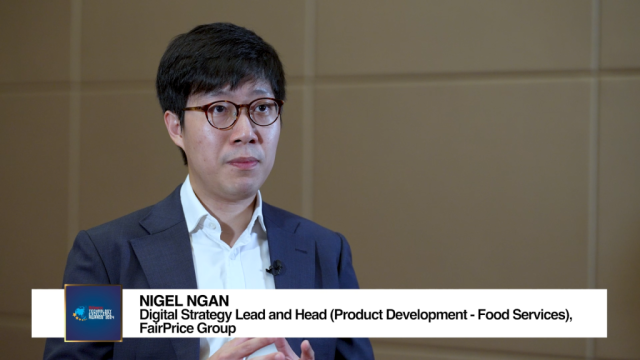
Singapore SMEs cautiously optimistic on economic growth
SMEs need to overcome 3 challenges – high operating costs, competition and skills shortage.
Small-to-medium enterprise (SME) leaders in Singapore are cognizant of challenges ahead but are poised for progress if they can capitalise on Singapore’s economic strength, government assistance and smart business collaborations, according to the UPS Asia Business Monitor (ABM) 2010 findings.
UPS’s award winning annual ABM survey report, now in its sixth year, focuses on the challenges and issues facing SMEs in Asia-Pacific.
Mirroring the overall Asia-Pacific optimism in this year’s edition of the ABM, Singapore SME leaders surveyed expect better business prospects this year (49 percent), an impressive jump from just 14 percent in the 2009 survey. Reflecting the continued optimism of a global recovery as anchored by Asia, an overwhelming 73 percent of these SMEs said they see most opportunities for trade growth within the Asia-Pacific trade lanes (12 percent in 2009) followed next by 40 percent that point towards the Middle East (22 percent in 2009) in 2010.)
According to the SMEs surveyed, the three critical challenges to overcome are high operating costs (53 percent), competition (30 percent) and skills shortage (28 percent). Given that the top concern in 2009 among Singapore SMEs was industry downturn, this year’s shift in focus indicates a return to business as usual.
“The results of this year’s UPS Asia Business Monitor indicate a positive shift in Singapore SMEs’ sentiment towards global recovery and trade. The challenge will be to harness the best that Singapore has to offer – access to funding, world class infrastructure and a geographical location dividend with respect to overseas markets,” said Greg Carstens, Managing Director, UPS Singapore. “The Singapore government and trade service partners such as global supply chain leaders like UPS continue to be enablers of global commerce supporting local SMEs with proactive initiatives designed to help navigate them through the challenges and be prepared for the future upturn,” he added.
According to the UPS competitiveness index, compiled from ABM data over the past six years, Singapore ranks number one; ahead of Hong Kong and Australia, respectively. Singapore SMEs’ continued competitive advantage follows from the highest levels of access to funding and working capital in Asia, coupled with strongly developed supply chain efficiency, government support, legal framework, transportation and infrastructure, high IT adoption, and easy access to overseas markets.
Based on these insights from the ABM 2010, UPS offers three recommendations to help SME leaders in Singapore stay relevant and compete with other SMEs in the international arena:
Recommendations
1. Leveraging Singapore’s strong international linkages to expand overseas
Singapore SMEs acknowledge that Asia-Pacific has tremendous growth potential, with 73 percent of local SMEs responding that the country’s trade within Asia-Pacific will grow in 2010 and 42 percent expecting the regional economy to pick up in 2010. Singapore SME leaders are also bullish on their own success, with 81 percent anticipating further expansion in the region over the next three years.
With Asia expected to lead the global recovery, Singapore SMEs are well poised to leverage the strategic geographic location and home advantage to expand into overseas markets. As the world’s easiest place to do business and the fourth largest financial centre in the world, Singapore leads the way for the quality of air transport, seaport and road infrastructure as well as connectivity, timeliness, ease and affordability of shipments and logistics competence. Singapore’s network of 18 regional and bilateral FTAs with 24 trading partners gives Singapore SMEs additional competitive advantage to strengthen their cross-border trade.
Such favourable biases make Singapore a prime choice for SMEs to expand into overseas markets, as the global economy rebalances.
2. Unlocking the potential of smart collaborations
For 53 percent of Singapore SME leaders surveyed, cost is the single most important concern today. This is representative of a number of underlying financial issues, including the top two concerns of “lack of willingness of institutions to lend to SMEs” cited by 25 percent and “insufficient collaterals” indicated by 22 percent. However, there is growing optimism, with 47 percent of Singapore SME leaders expecting better business prospects in 2010. This optimism is reassuring as SMEs play an important role in Singapore’s economy, employing nearly six out of every ten workers.
To effectively alleviate their cost concerns, Singapore SMEs can tap government support made available through a number of useful assistance initiatives that include SME Management Action for Results Initiative (SMART) and Startup Enterprise Development Scheme (SEEDS). These cover a wide spectrum of business activities including financing, capabilities development, efficiency and productivity improvement, human resource upgrading and development, overseas markets access, infocomm adoption, technology development and commercialisation, among others.
An equally effective way of managing costs and gaining competitiveness is actively reviewing overall resource allocation, and supply chain dynamics to better manage their business. With the help of a global leader in supply chain and freight services like UPS, SMEs can mitigate risks through forward planning, scrutinising their supply chains for vulnerabilities and developing contingency plans.
3. Creating the next wave of business efficiencies by adopting technology as a force multiplier
Apart from cost, competition remains a key concern as indicated by 30 percent of Singapore SME leaders. Juxtaposed against this, SME leaders have indicated innovation (74 percent) and IT adoption (73 percent) as primary tools of competitiveness enablers.
SMEs are more flexible and agile than multinationals, they can identify areas where they can help plug the gaps, and this is especially true for those that want to grow beyond the local market. Technologies such as cloud computing and virtualisation offer benefits similar to multi-nationals, but at scales that make business sense for SMEs. The next phase of growth for SMEs must be driven by smart technology adoption as a force multiplier for competitive advantage.
























 Advertise
Advertise









